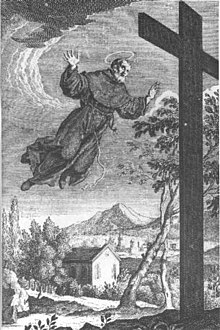The God gene hypothesis proposes that a specific gene, called vesicular monoamine transporter 2 (VMAT2), predisposes humans towards spiritual or mystic experiences. The idea has been postulated bygeneticist Dean Hamer, the director of the Gene Structure and Regulation Unit at the U.S. National Cancer Institute, and author of the 2005 book The God Gene: How Faith is Hardwired into our Genes.
The God gene hypothesis is based on a combination of behavioral genetic, neurobiological and psychological studies. The major arguments of the hypothesis are: (1) spirituality can be quantified by psychometric measurements; (2) the underlying tendency to spirituality is partially heritable; (3) part of this heritability can be attributed to the gene VMAT2;[1] (4) this gene acts by altering monoamine levels; and (5) spiritual individuals are favored by natural selection because they are provided with an innate sense of optimism, the latter producing positive effects at either a physical or psychological level.
Contents
[hide]Proposal[edit]
| This article needs additional citations for verification. (March 2014) (Learn how and when to remove this template message) |
According to this hypothesis, the God gene (VMAT2) is a physiological arrangement that produces the sensations associated, by some, with mystic experiences, including the presence of God or others, or more specifically spirituality as a state of mind.
Based on research by psychologist Robert Cloninger, this tendency toward spirituality is quantified by the self-transcendence scale, which is composed of three sub-sets: "self-forgetfulness" (as in the tendency to become totally absorbed in some activity, such as reading); "transpersonal identification" (a feeling of connectedness to a larger universe); and "mysticism" (an openness to believe things that remain unproven, such as ESP)(This is an incorrect definition of mysticism). Cloninger suggests that taken together, these measurements are a reasonable way to quantify (make measurable) how spiritual someone is feeling.
The self-transcendence measure was shown to be heritable by classical twin studies conducted by Lindon Eaves and Nicholas Martin. Interpretors of these studies argue that specific religious beliefs (such as belief in Jesus) have no genetic basis and are instead memes,[citation needed] cultural units transmitted by imitation (non genetic means).
In order to identify some of the specific genes involved in self-transcendence, Hamer analyzed DNA and personality score data from over 1000 individuals and identified one particular locus, VMAT2, with a significant correlation. VMAT2 codes for a vesicular monoamine transporter that plays a key role in regulating the levels of the brain chemicals serotonin, dopamine and norepinephrine. These monoamine transmitters are in turn postulated to play an important role in regulating the brain activities associated with mystic beliefs.
The evolutionary advantage this might convey, or whether it could be a side effect of a separate adaptation, have yet to be fully explored. However, Dr. Hamer has hypothesized that self-transcendence makes people more optimistic, which makes them healthier and likely to have more children.
Scientific criticism[edit]
Although it is always difficult to determine the many interacting functions of a gene, VMAT2 appears to be involved in the transport of monoamine neurotransmitters across the synapses of the brain. PZ Myers argues: "It's a pump. A teeny-tiny pump responsible for packaging a neurotransmitter for export during brain activity. Yes, it's important, and it may even be active and necessary during higher order processing, like religious thought. But one thing it isn't is a 'god gene.'"[2]
Carl Zimmer claimed that VMAT2 can be characterized as a gene that accounts for less than one percent of the variance of self-transcendence scores. These, Zimmer says, can signify anything from belonging to the Green Party to believing in ESP. Zimmer also points out that the God Gene theory is based on only one unpublished, unreplicated study.[3] However Hamer notes that the importance of the VMAT2 finding is not that it explains all spiritual or religious feelings, but rather that it points the way toward one neurobiological pathway that may be important.
Religious response[edit]
John Polkinghorne, an Anglican priest, member of the Royal Society and Canon Theologian at Liverpool Cathedral, was asked for a comment on Hamer's theory by the British national daily newspaper, The Daily Telegraph. He replied: "The idea of a God gene goes against all my personal theological convictions. You can't cut faith down to the lowest common denominator of genetic survival. It shows the poverty of reductionist thinking." [4][5]
Walter Houston, the chaplain of Mansfield College, Oxford, and a fellow in theology, told the Telegraph: "Religious belief is not just related to a person's constitution; it's related to society, tradition, character—everything's involved. Having a gene that could do all that seems pretty unlikely to me."
Hamer responded that the existence of such a gene would not be incompatible with the existence of a personal God: "Religious believers can point to the existence of God genes as one more sign of the creator's ingenuity—a clever way to help humans acknowledge and embrace a divine presence."[5]
Hamer repeatedly notes in his book that, "This book is about whether God genes exist, not about whether there is a God."[6]






